A circular economy is a model of production and consumption that reduces waste by reusing and recycling existing materials and products from the designing stage, hence promoting a sustainable use of resources.
―
Q. What is a Circular Economy?
―
A circular economy is a model of production and consumption that reduces waste by reusing and recycling existing materials and products from the designing stage, hence promoting a sustainable use of resources.
The concept of a circular economy was first introduced in 1989 by British economists David Pearce and Kerry Turner in “Economics of Natural Resources and the Environment.” Since then, it has increasingly been seen as a necessary step toward achieving carbon neutrality, a global challenge for survival.
Europe is a forerunner in circular economy. Through its New Circular Action Economy, the European Union is promoting the establishment of a circular economy consisting of “production → consumption → waste management → recycling” of products. To this end, it is establishing standards for the production of sustainable products in resource-intensive industries and improving the recycling rate of raw materials.
<The EU’s Circular Economy Action Plan >
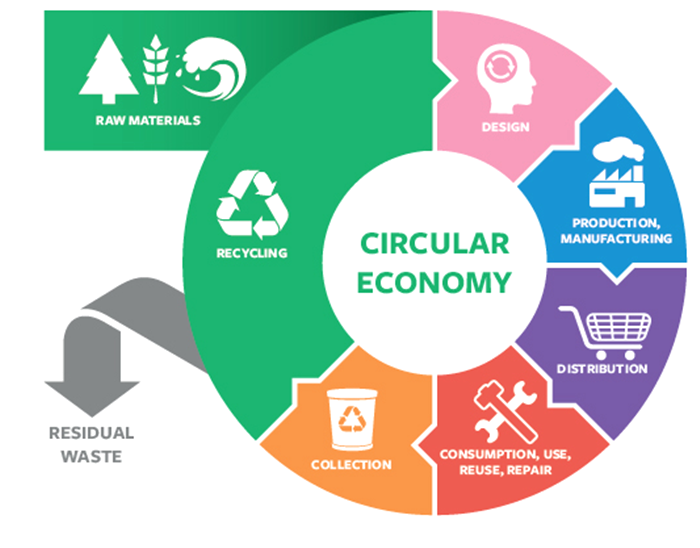
(Source: European Union)
Our current economic system can be described as a linear economy, where we extract raw materials from nature, manufacture into products, then throw them away as waste. In other words, a linear process of “take – make – dispose.”
The problem is that in this process, 92.8% of the resources are thrown away as waste and only 7.2% of the resources are recycled. As a result, the linear economy puts a significant burden on the environment, leading to various climate, biodiversity, and pollution issues.
The Earth is nearly crossing thresholds of the planetary boundaries. Experts estimate that we would need to reduce global resource extraction and consumption by one-third to bring human activity back within the safe limits.
A circular economy can be the key to minimizing burden on the environment because products are designed with the goal of eliminating waste in the first place. For example, in the textile and fashion industry, the use of natural colors and dyes through regenerative agriculture to produce organic cotton and other natural fibers can reduce the burden on the environment.
Therefore, the shift towards a circular economy is an important step to help solve the problem of pollution as well as other complex issues such as climate change and biodiversity loss.
―
The four key circular actions
―
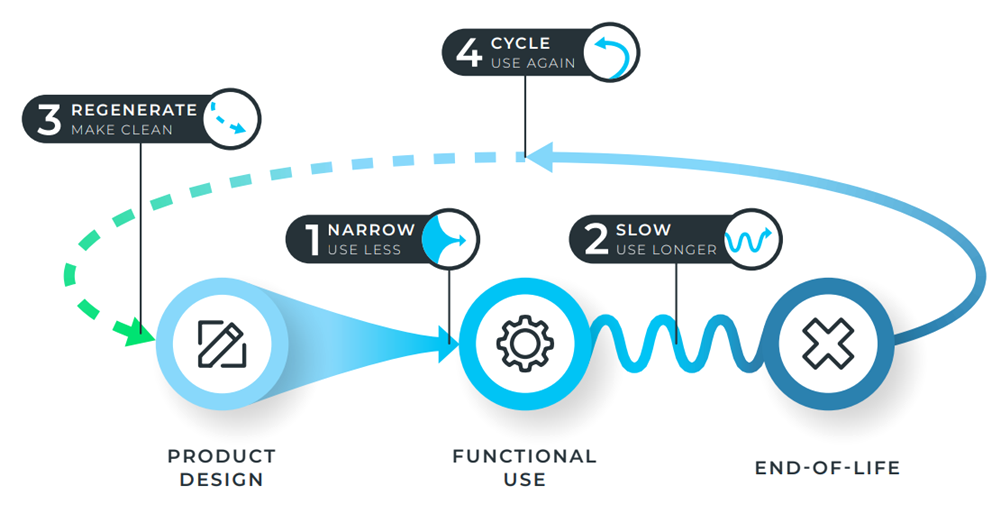
(Source: The four objectives are based on the work of Bocken et al. (2016))
How can we achieve this goal?
The Circularity Gap Report 2023 released by the Davos Forum proposes the following circular solutions across key global systems.
Four Key Circular Actions 1) USE LESS 2) USE LONGER 3) USE AGAIN 4) MAKE CLEAN |
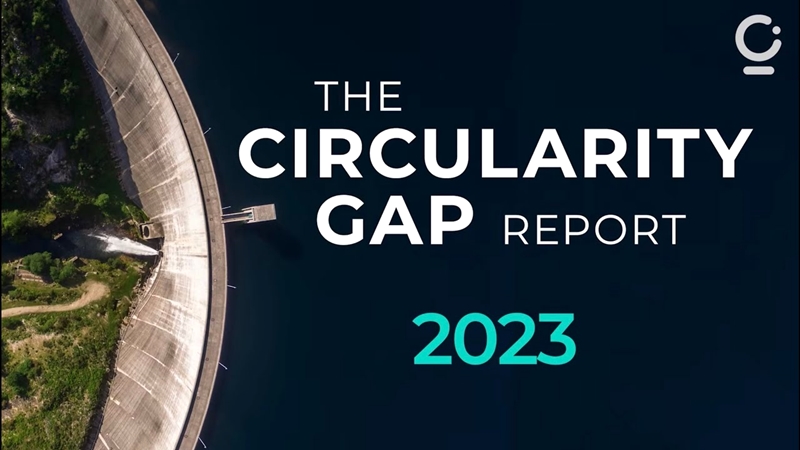
(Video Source: The Circularity Gap Report 2023)
―
European Union’s plastic regulation
―
Let’s take a look at a current example of how it is put in practice.
The European Union, a leader in the circular economy, is increasingly regulating the use of plastics as a major contributor to environmental pollution under its New Circular Action Economy.
The EU's plastics regulation is getting tougher, with a shift in focus from recycling to a new emphasis on USE AGAIN and USE LONGER to achieve a comprehensive reduction in plastic use.
The goal of the new regulations is to reduce plastic packaging waste in each EU country by 15% per capita by 2040 compared to 2018. Specifically, by 2030, 20% of takeaway beverage sales must be served in reusable containers or customer-brought packaging, with the goal of reaching 80% by 2040.
They are pushing for a ban on single-use containers in bars and restaurants (USE LESS), a ban on single-use packaging for fruits and vegetables, and a ban on hotels providing single-use amenities.
In addition, biodegradable plastic products sold in the EU (MAKE CLEAN) will be labeled with biodegradation times based on environment and conditions, and industrial compostable packaging will only be allowed for tea bags, coffee capsules, stickers on fruits and vegetables, and ultralight plastic bags.
―
High-impact sectors
―
A circular economy is essential for fighting climate change.
Currently, material extraction and use amount to 70 percent of global greenhouse gas (GHG) emissions. That means that if we want to significantly reduce emissions, we have to look at “hot spots” of unsustainable consumption and production in high-impact sectors such as industry, buildings and construction, and agriculture.
Recent studies by the Ellen Macarthur Foundation show us that, through efficient and more circular use of materials in just four key industrial materials (cement, steel, plastics, and aluminum), circular economy strategies can help reduce global GHG emissions by 40 percent by 2050.
The four key global systems in the circular solutions include ▲Agrifood, ▲Mobility & Transport, ▲Manufactured Goods & Consumables, ▲Built Environment. Let’s take a look at each of these missions as introduced in The Circularity Gap Report 2023.
① Food Systems
Agriculture now occupies about half of the habitable surface of the planet. This is responsible for one-third of global GHG emissions and 70% of the accessible freshwater withdrawals. As the world population grows, we need to adopt smarter ways to produce food without harming the environment.
· Consume healthier, satiating foods. Shift in diet from meat, fish, and dairy towards cereals, fruits, vegetables, and nuts.
· Lessen food waste. Waste less food products and improve transport and storage management to reduce GHG emissions.
· Use local, seasonal, and organic. It can reduce the use of toxic fertilizers, heating fuels and transportation, ultimately cutting emissions and material use.
· Regenerative agriculture. This model supports healthy soils and keeps the land arable for longer than typical farming processes.
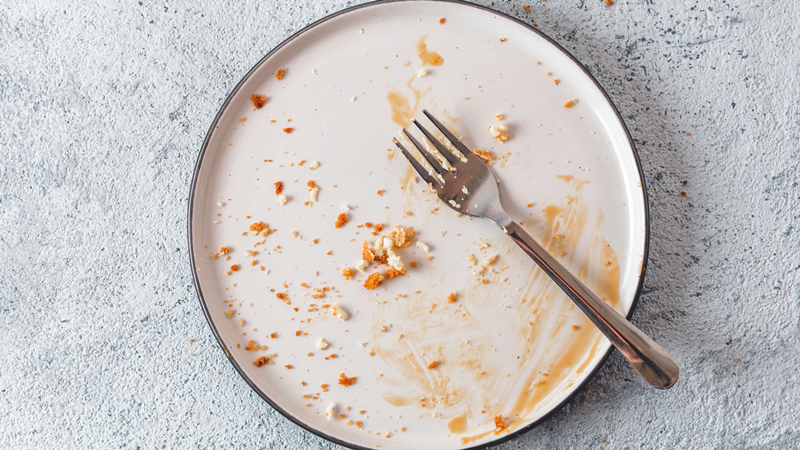
② Mobility and Transport
The current transport systems are high consumers of fossil fuels and cause harm to the ecosystem.
· Embrace car-free lifestyles and roads. Ride bikes and share rides whenever possible and work-from-home to commute less.
· Invest in high-quality public transport. Incentivize the use of trams, buses and rails while creating safe cycling routes and car-free city centers.
· Rethink air travel. Minimize personal air travel, especially in regions with the most demand for long-haul air travel, such as North America, Europe and Asia.
③ Manufactured Good and Consumables
The industrial system encompasses a huge range of products and materials, such as steel, paper, chemicals, textiles, and plastics, which account for approximately one-third of global GHG emissions.
· Refrain from fast fashion. Prioritize natural and local textile manufacturing, as well as higher quality and more durable garments. Recycle or reuse all used clothing.
· Buy what you need. Practice responsible buying with the support of circular policies such as service-based business models like sharing or pay-per-use.
· Extend the lifetime of machinery, equipment, and goods. Minimum guarantee of products can lessen the costs of repairing, remanufacturing, upgrading, and reusing goods.
· Mainstream industrial symbiosis and efficiency. Stronger collaboration within and between industries can save significant amounts of material and emissions.
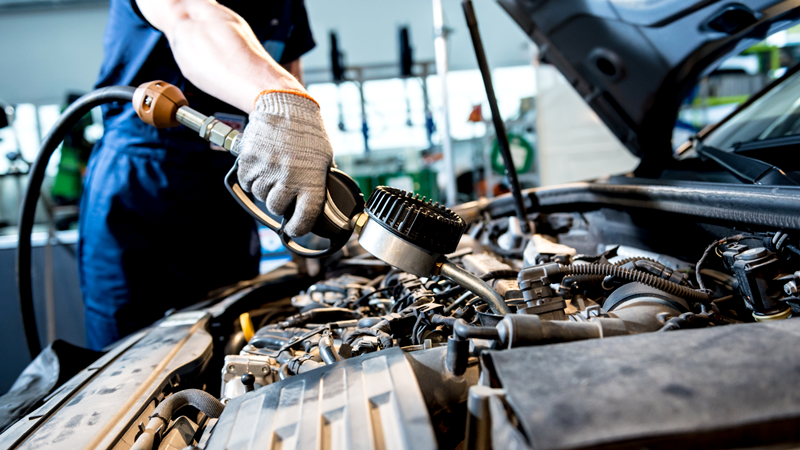
④ Built Environment
The build environment today contributes 40% to global emissions and misses recycling opportunities.
· Be as energy efficient as possible. Design circular building and equip them with clean energy solutions, such as heat pumps. Reduce the amount of energy used by washing at lower temperatures and lowering the thermostat.
· Make the most of what already exists. Tons of materials are locked into existing buildings. Reuse, repurpose and renovate them with secondary materials when possible and make new building ready for this in the future.
· Prioritize circular material. Use organic materials such as wood or timber over steel and concrete. Utilize mainstream modular construction and lightweight frames and structures to reduce cement and steel use.
· Reuse waste. Maximize recycling to reduce the need for virgin materials.
―
Why circular economy matters
―
Six out of the nine planetary boundaries that must be preserved for sustainable human development are currently at risk. If we continue to use up the planet’s resources at the rate that we are, we will need three planets by 2050.
Within the linear economy of the last few decades, we have been extracting the planet’s resources at a staggering rate, from 28.6 gigatons in 1972 to 101.4 gigatons in 2021. If this linear economy continues, it is projected that the extraction of the earth’s resources will exceed 170 gigatons in 2050.
<Increasing material extraction in a linear economy>
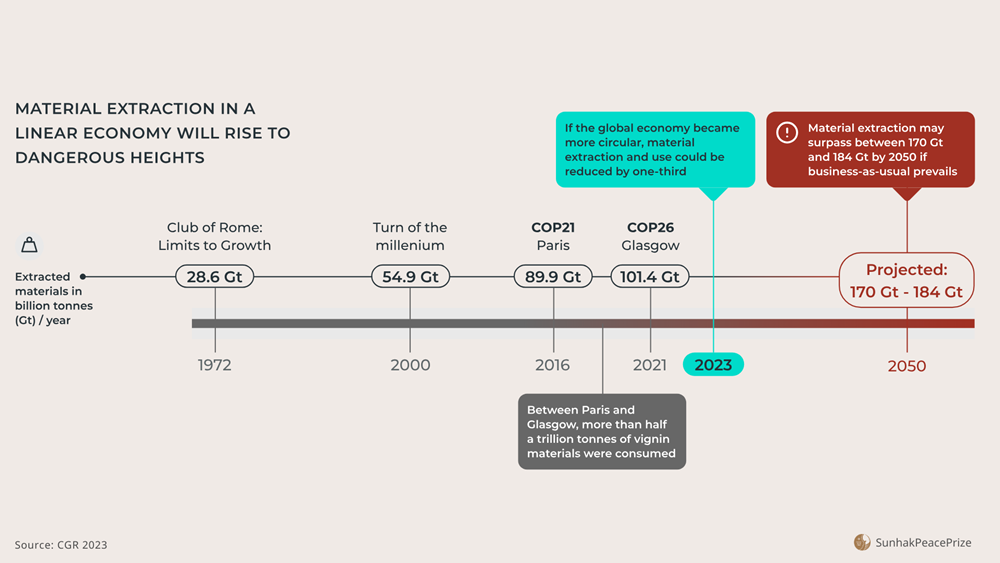
(Source: CGR 2023년 (circularity-gap.world))
Research shows that we need to reduce global material extraction and consumption by one-third immediately in order to lower the risk to the planet, and the shift to a circular economy will play an important role in achieving this goal.
In the big picture, every sector has a role to play in the shift towards a circular economy: governments will need to lead the way, companies will need to design products that are renewable, and consumers will need to practice a lifestyle of using less, use longer, use again, and use again.
“To embrace the future,
we must expand the scope of vocations that can herald the coming of peace.
Even though we may never meet our descendants, we must make sure that all their activities will harmonize in peaceful societies and nations.”
-Dr. Hak Ja Han Moon
Founder of Sunhak Peace Prize-
Learn more: |
Written by Sharon Choi
Director of Planning
Sunhak Peace Prize Secretariat
Translated by Hyang Oh

